

Take the board of the , enlarge the cooler so that three fans fit on it, adjust the board accordingly and cool the majority of the voltage converters directly for the first time - the Gaming X Trio is ready, which has the space between the norma... MSI relies on a rather tidy multi-layer board with a somewhat unconventional design, which was probably also developed from a thermal point of view. The board of revision 6 corresponds approximately to revision 2, as it ... Benchmarks in 2560 x 1440 pixels
We have deliberately dispensed with Full HD (1920 x 1080p) as the card runs into the CPU limit even in the highest settings. In WQHD (2560 x 1440 pixels), on the other hand, the actual working environment and the kar... Benchmarks in 3840 x 2160 pixels
The card is also significantly faster in this high resolution than a GeForce GTX 1080 Founders Edition or GeForce GTX 1080 Founders Edition. TitanX (Pascal) in Nvidia reference design. Overall, many titles are quite good in UH... Power consumption at different loads
The power consumption in the gaming loop is pretty much exactly on the point that MSI set as the power target with 285 watts in the BIOS. In the Torture loop, the power consumption even drops below this value. Auc... Overclocking
Manual overclocking with air cooling is average, if you can withstand the fan, which then works at a slightly over 2500 rpm at maximum speed. On the one hand, of course, as always, we have the GPU lottery, on the other hand, we have... Cooling system and backplate
The special feature is the use of a now more shortened "sandwich" system, which uses a kind of cooling and stabilization frame between the top of the board and the actual heat sink. That's what you're doing now ... Summary
A lot helps a lot, so much is already certain. With the GeForce GTX 1080 Ti Gaming X Trio, MSI not only improves the old Gaming X, but for the first time relies on a new cooling system, THE VR MOSFETs, coils and also the capacitors...
Power consumption at different loads
The power consumption in the gaming loop is pretty much exactly on the point that MSI set as the power target with 285 watts in the BIOS. In the Torture loop, the power consumption even drops below this value. Even if the maximum possible power target is exhausted, the card with just under 320 watts remained a frame and even falls below the limit value of more than 330 watts. The limit is therefore the voltage, not the power as such.
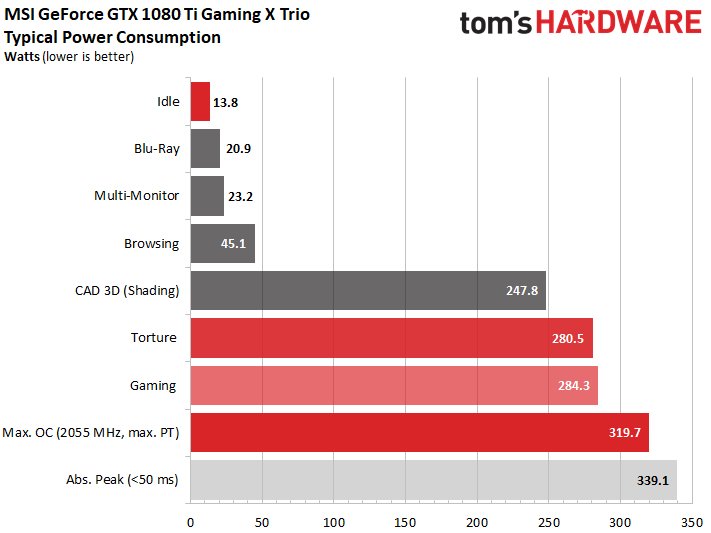
The corresponding voltages for both loops in the factory state are shown in the following diagram:
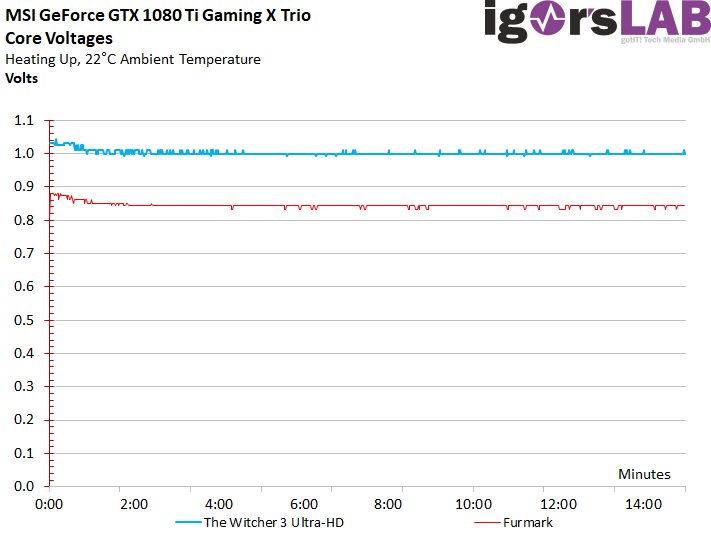
Compliance with the standard on the motherboard slot
With a maximum of 0.6 amps (torture and gaming), the card is far below what the PCI SIG sets with a maximum of 5 amps (66 watts) for the 12-volt rail on the motherboard slot. With the exception of a few auxiliary voltages, MSI feeds the card exclusively via the external supply connections and not via the motherboard. Good decision.
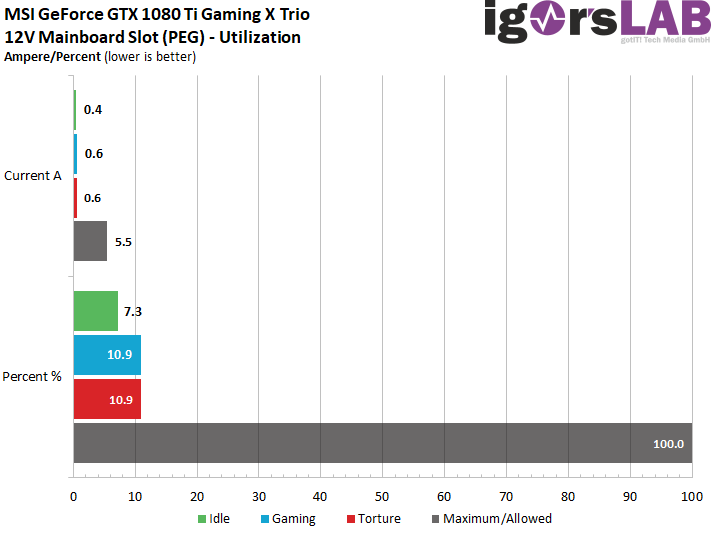
Detailed graphics: power consumption and currents
For a better illustration, we have also recorded all measurement results as detailed curves in the graphs below:
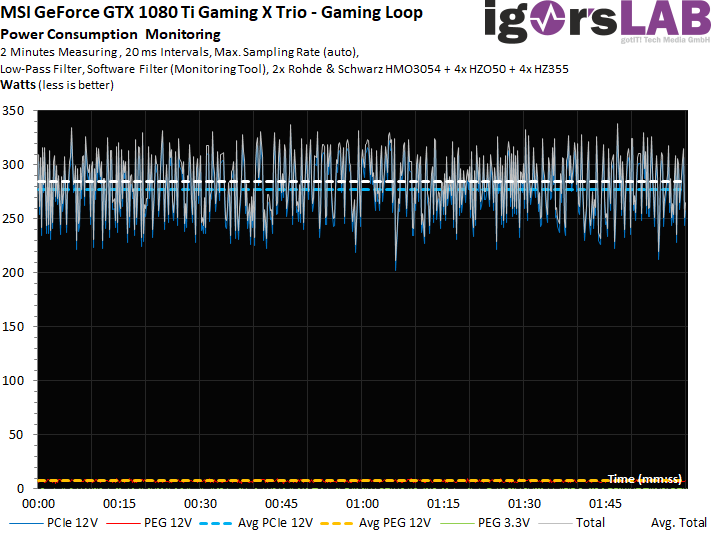
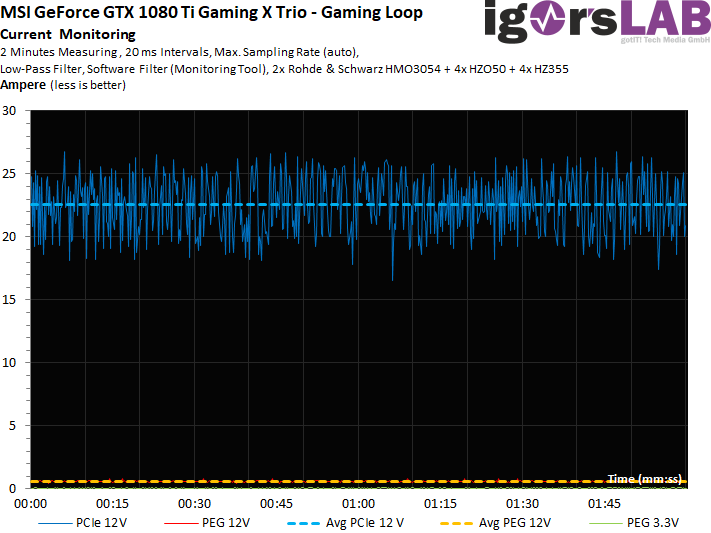
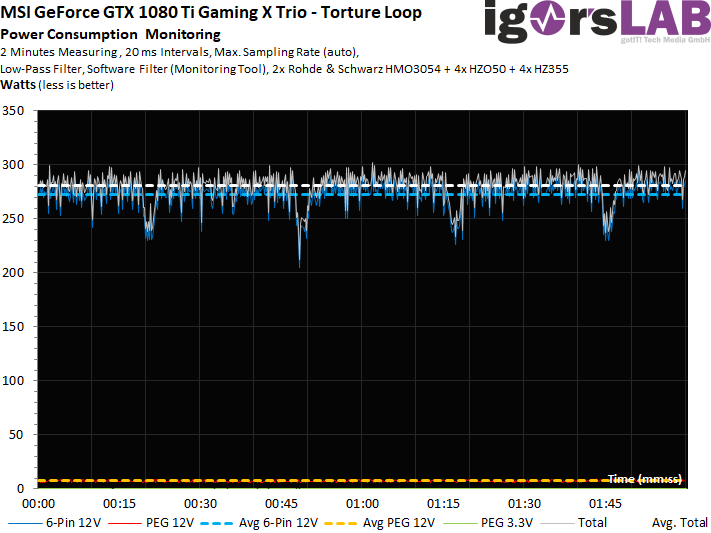
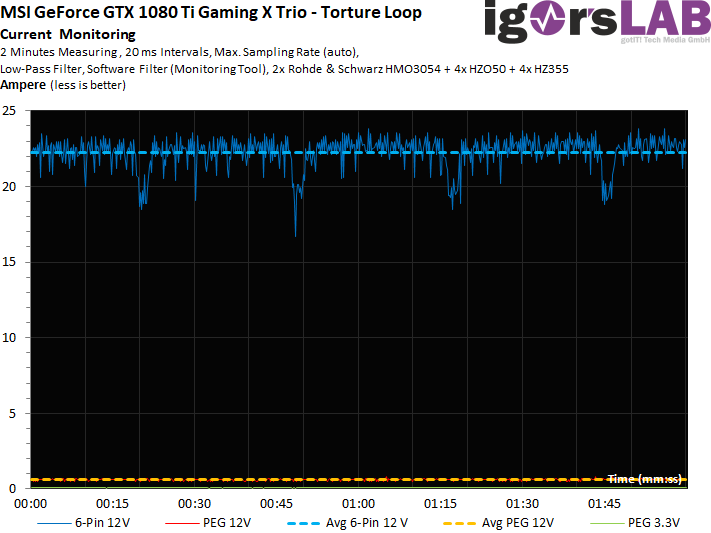







































Kommentieren